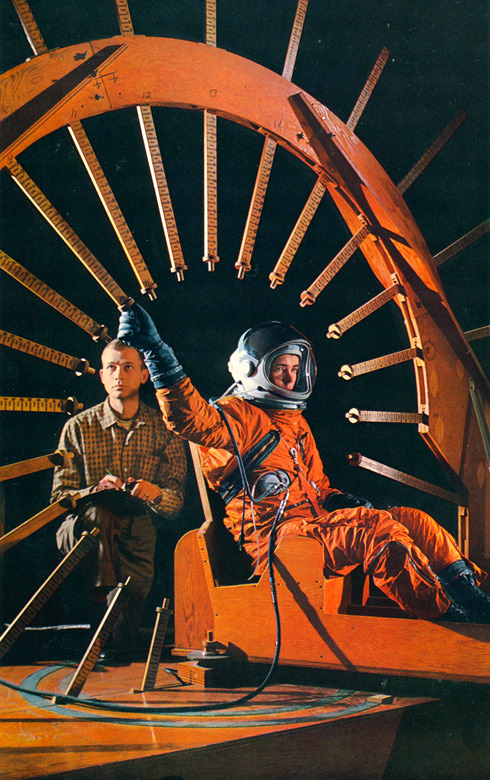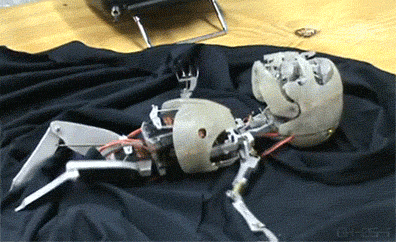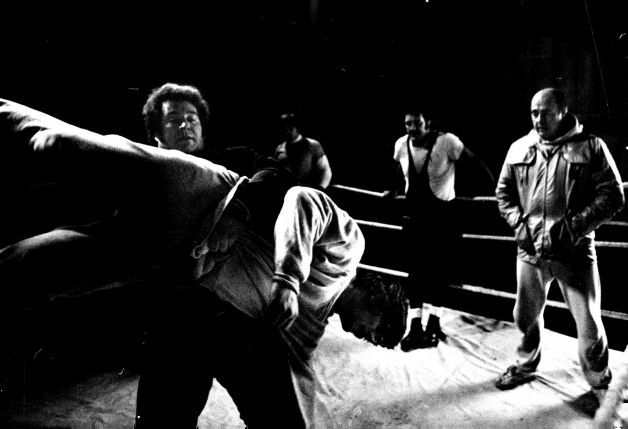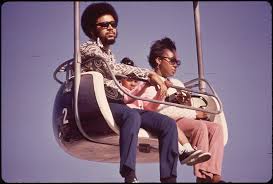
At Esquire, John H. Richardson profiles the brains behind Siri, Adam Cheyer and Chris Brigham, as they attempt (with other AI geniuses) to create a voice-based interface named Viv, which would “think” for itself and seamlessly band together all of the disparate elements of modern computing, a move which, if successful, could fundamentally change information gathering and the entire media landscape. It might unleash entrepreneurial energy and, you know, enable mass technological unemployment. There’s plenty of hyperbole surrounding the project (and in the article), though Siri’s success lends credence to the possibility of the outsize ambition being realized. An excerpt:
BRIGHAM CAME UP WITH the beautiful idea, which makes its own perfect sense. Cheyer was always the visionary. When they met at SRI International twelve years ago, Cheyer was already a chief scientist distilling the work of four hundred researchers from the Defense Department’s legendary CALO project, trying to teach computers to talk—really talk, not just answer a bunch of preprogrammed questions. Kittlaus came along a few years later, a former cell-phone executive looking for the next big idea at a time when the traditional phone companies were saying the iPhone would be a disaster—only phone companies can make phones. An adventurer given to jumping out of planes and grueling five-hour sessions of martial arts, he saw the possibilities instantly—cell phones were getting smarter every day, mobile computing was the future, and nobody wanted to thumb-type on a tiny little keyboard. Why not teach a phone to talk?
Brigham, at the time just an undergrad student randomly assigned to Cheyer’s staff, looked like a surfer, but he had a Matrix-like ability to see the green numbers scroll, offhandedly solving in a single day a problem that had stumped one of Cheyer’s senior scientists for months. Soon he took responsibility for the computer architecture that made their ideas possible. But he also had a rule-breaking streak—maybe it was all those weekends he spent picking rocks out of his family’s horse pasture, or the time his father shot him in the ass with a BB gun to illustrate the dangers of carrying a weapon in such a careless fashion. He admits, with some embarrassment, now thirty-one and the father of a young daughter, that he got kicked out of summer school for hacking the high school computer system to send topless shots to all the printers. After the SRI team and its brilliant idea were bought by Steve Jobs and he made it famous—Siri, the first talking phone, a commercial and pop-culture phenomenon that now appears in five hundred million different devices—Brigham sparked international news for teaching Siri to answer a notorious question: “Where do I dump a body?” (Swamps, reservoirs, metal foundries, dumps, mines.)
He couldn’t resist the Terminator jokes, either. When the Siri team was coming up with an ad campaign, joking about a series of taglines that went from “Periodically Human” to “Practically Human” to “Positively Human,” he said the last one should be “Kill All Humans.”
In the fall of 2012, after they all quit Apple, the three men gathered at Kittlaus’s house in Chicago to brainstorm, throwing out their wildest ideas. What about nanotechnology? Could they develop an operating system to run at the atomic level? Or maybe just a silly wireless thing that plugged into your ear and told you everything you needed to know in a meeting like this, including the names and loved ones of everyone you met?
Then Brigham took them back to Cheyer’s original vision. There was a compromise in the ontology, he said. Siri talked only to a few limited functions, like the map, the datebook, and Google. All the imitators, from the outright copies like Google Now and Microsoft’s Cortana to a host of more-focused applications with names like Amazon Echo, Samsung S Voice, Evi, and Maluuba, followed the same principle. The problem was you had to code everything. You had to tell the computer what to think. Linking a single function to Siri took months of expensive computer science. You had to anticipate all the possibilities and account for nearly infinite outcomes. If you tried to open that up to the world, other people would just come along and write new rules and everything would get snarled in the inevitable conflicts of competing agendas—just like life. Even the famous supercomputers that beat Kasparov and won Jeopardy! follow those principles. That was the “pain point,” the place where everything stops: There were too many rules.
So what if they just wrote rules on how to solve rules?
The idea was audacious. They would be creating a DNA, not a biology, forcing the program to think for itself.•































 For some reason, people long for their cars to fly. In the 1930s it was believed that Spanish aviator Juan de la Cierva had made the dream come true, although he coincidentally died in an air accident in Amsterdam just as his roadable flying machine was proving a success in Washington D.C.
For some reason, people long for their cars to fly. In the 1930s it was believed that Spanish aviator Juan de la Cierva had made the dream come true, although he coincidentally died in an air accident in Amsterdam just as his roadable flying machine was proving a success in Washington D.C.




